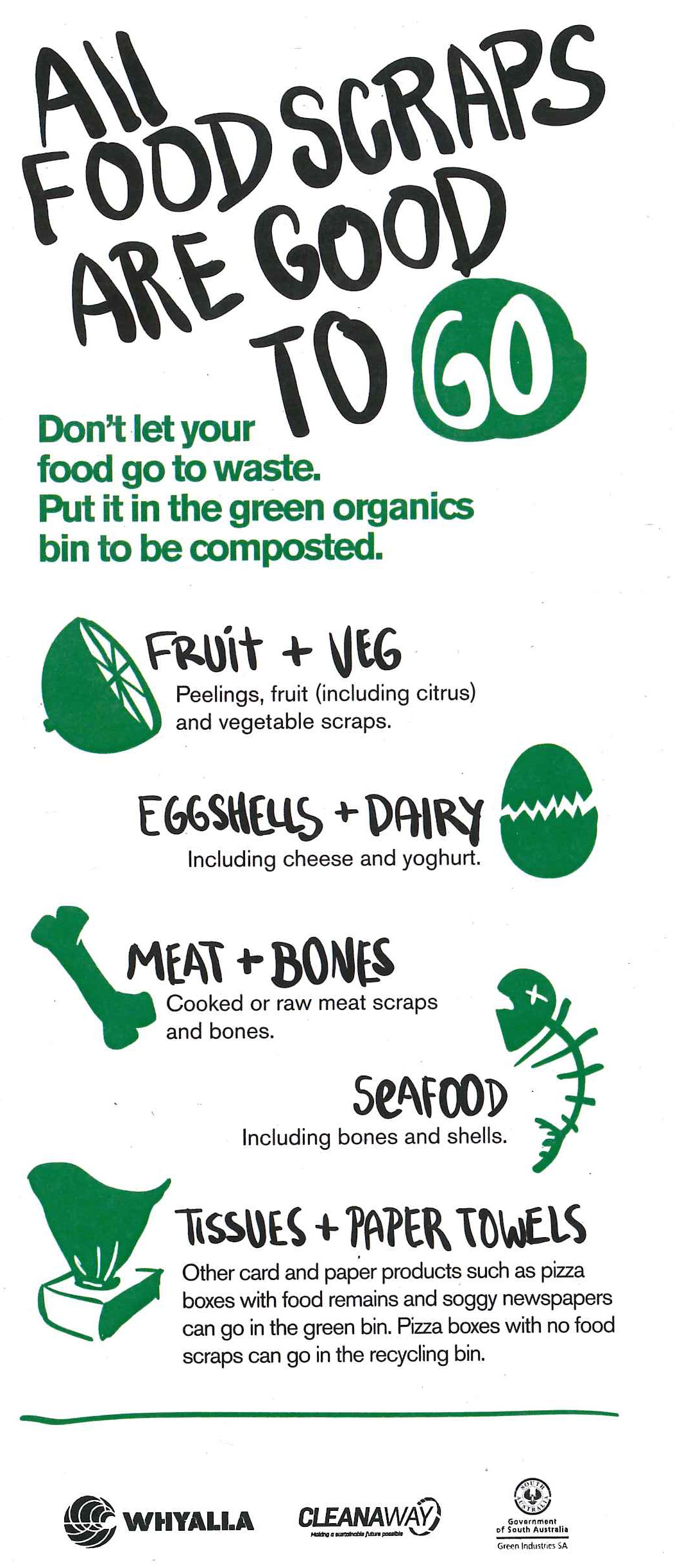What can I do with my food scraps or green waste?
How much of the rubbish we put in our red lidded bin, and that then goes to landfill, could be put to good use in the garden?
Almost half. Yes, about 48% of our waste could be made into compost and mulch at home to:
- help us create healthy gardens;
- reduce the germination of annual weeds;
- reduce water loss through evaporation;
- lower extreme soil temperatures in summer and thus alleviate plant stress;
- reduce soil erosion;
- enrichSouth Australia’s poor soils; and
- reduce the waste that goes to landfill, thus reducing greenhouse emissions.
What is composting?
Composting is the process by which waste organic matter is broken down over a period of weeks or months. It converts organic materials into a rich dark-coloured product, mainly humus, which can then be spread on or dug into the garden to act as a soil conditioner and slow release fertiliser.
Micro-organisms, including bacteria and fungi, break down the materials, recycling them and their nutrients back into the environment. This activity generates heat, which destroys weeds and seeds, pests and diseases. The heat dissipates as the process is completed.
Composting needs
- air;
- moisture; and
- nitrogen and carbon (woody material).
What can I put in my compost?
- vegetable and fruit scraps;
- fallen leaves and fruit;
- tea leaves and tea bags;
- coffee grounds;
- vacuum cleaner dust;
- dead flowers;
- soft stems of plants;
- egg shells;
- old newspapers (shredded);
- lawn clippings;
- sawdust, and small amounts of wood ash or lime; and
- tissues.
What can’t I put in my compost?
- meat, fish and dairy products (they attract rats and vermin and can smell);
- large branches (they won’t break down);
- timber products treated with chemicals;
- magazines; and
- diseased plants*.
Which method is best?
Choose a shady area of the garden so the sun won’t dry out the compost. Put the materials all in together or layer them: grass clippings, leaves, food scraps, shredded newspaper. The best place to compost is in:
- a pile on the ground;
- an enclosure made of wood or mesh;
- a large metal drum with no base and holes drilled in the sides to let air in;
- a commercial compost bin; and
- a rotating compost barrel.
Each has disadvantages and advantages, for example:
- some bin designs make it hard to get the compost out
- compost heaps may attract unwanted animals and vermin.
How can I help the process?
Help the material to break down quickly by:
- mixing/turning it over regularly to allow air in;
- making sure it is moist;
- keeping it well drained; and
- breaking up materials into small pieces before adding them.
Note,that adding compost worms to speed up the process may not be successful (compost heaps that generate very high temperatures will kill the worms).
If the material to be composted is very woody (i.e. lacking nitrogen) add a small amount of manure. If it is dry add water or materials high in moisture; if it is too wet add straw, wood chips or other dry organic materials (i.e. not soil).
Whyalla Green Organic Bins
The material collected in Whyalla's Green Organics kerbside bins is composted in commercial facilities meaning that all kinds of food scraps, including meat bones and egg shells, as well a tissues and paper towels, can go into this bin. As you already know, there are both financial and environmental benefits to shifting this material from the General Waste or red lidded bins to the green-lidded Organics bin.
As it would be expensive to provide kitchen baskets to every household, and it's unlikely they would all be used, we instead ask people to use alternative methods to collect kitchen scraps. These include:
- collecting scraps in an ice-cream or yoghurt tub then tipping the scraps loose into the green bin. You can line such containers with paper towel or used mushroom bag as these are both fully compostable and it makes the container easier to clean.
- using paper bakery bags, used mushroom bags and other similar bags to hold the scraps.
- laying a sheet of newspaper on the counter whilst preparing meals, placing the food scraps on it then rolling it up and popping it in the green bin.
Please not that it's best to have some garden matter in the bottom of the bin before adding food scraps.

